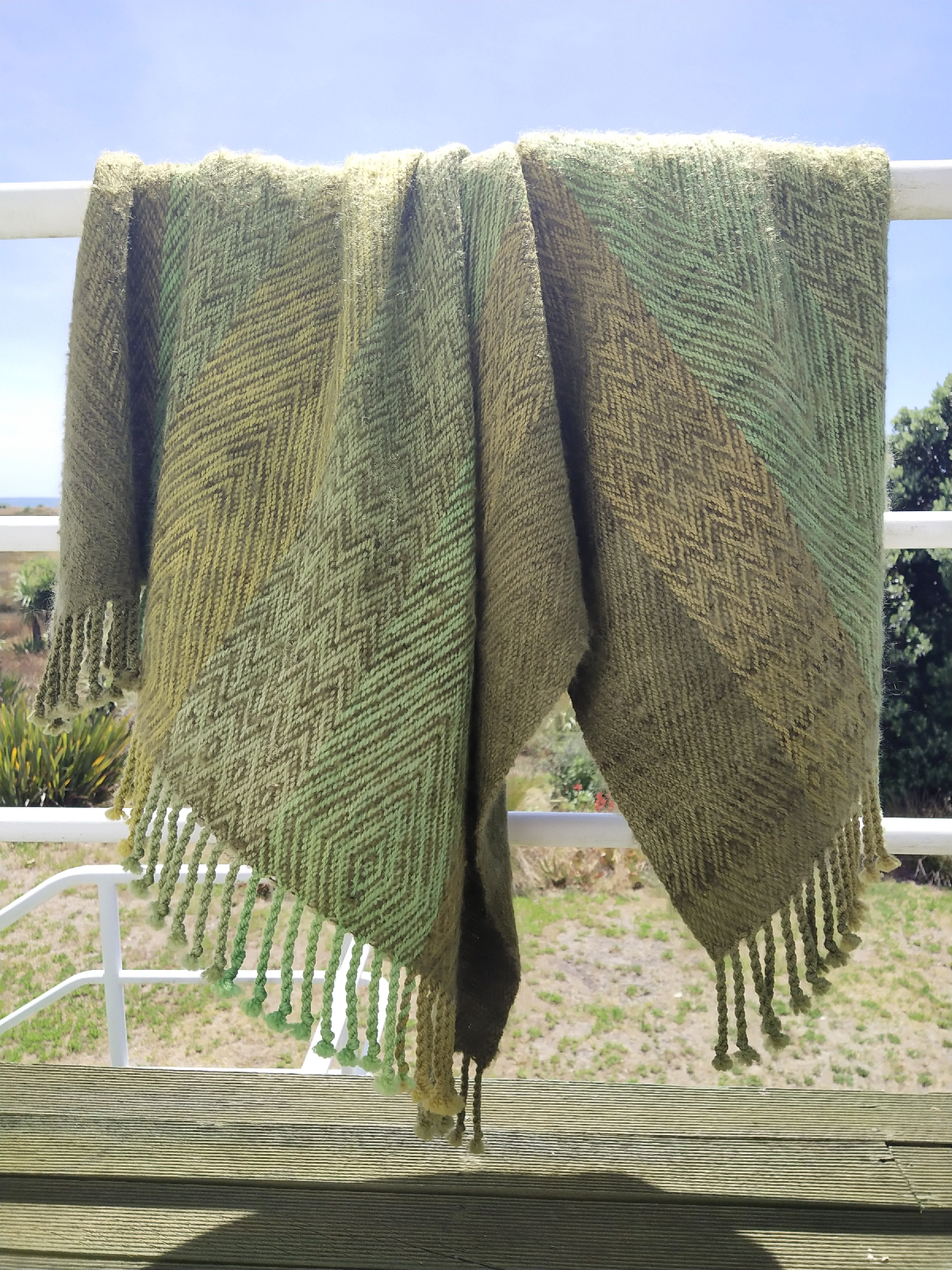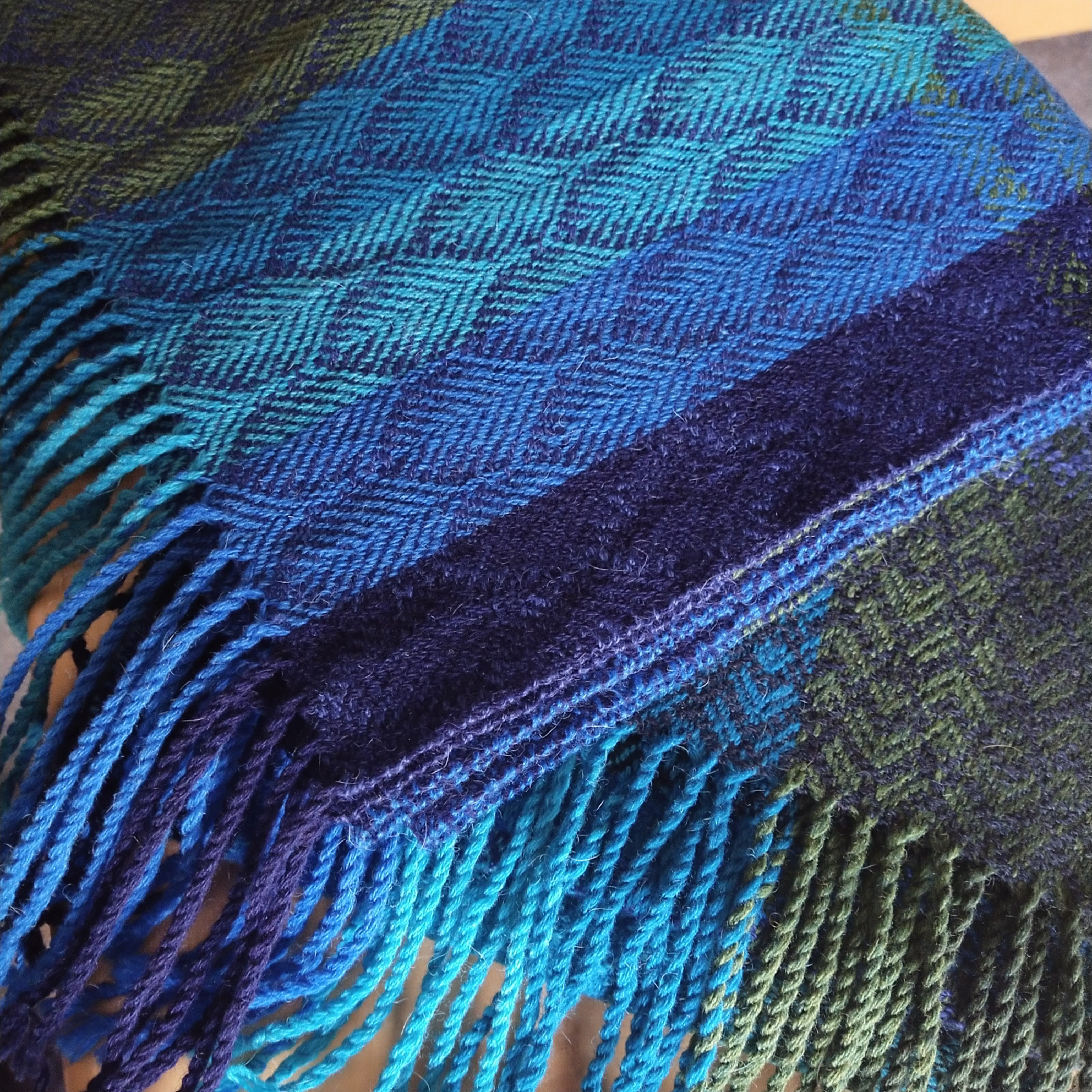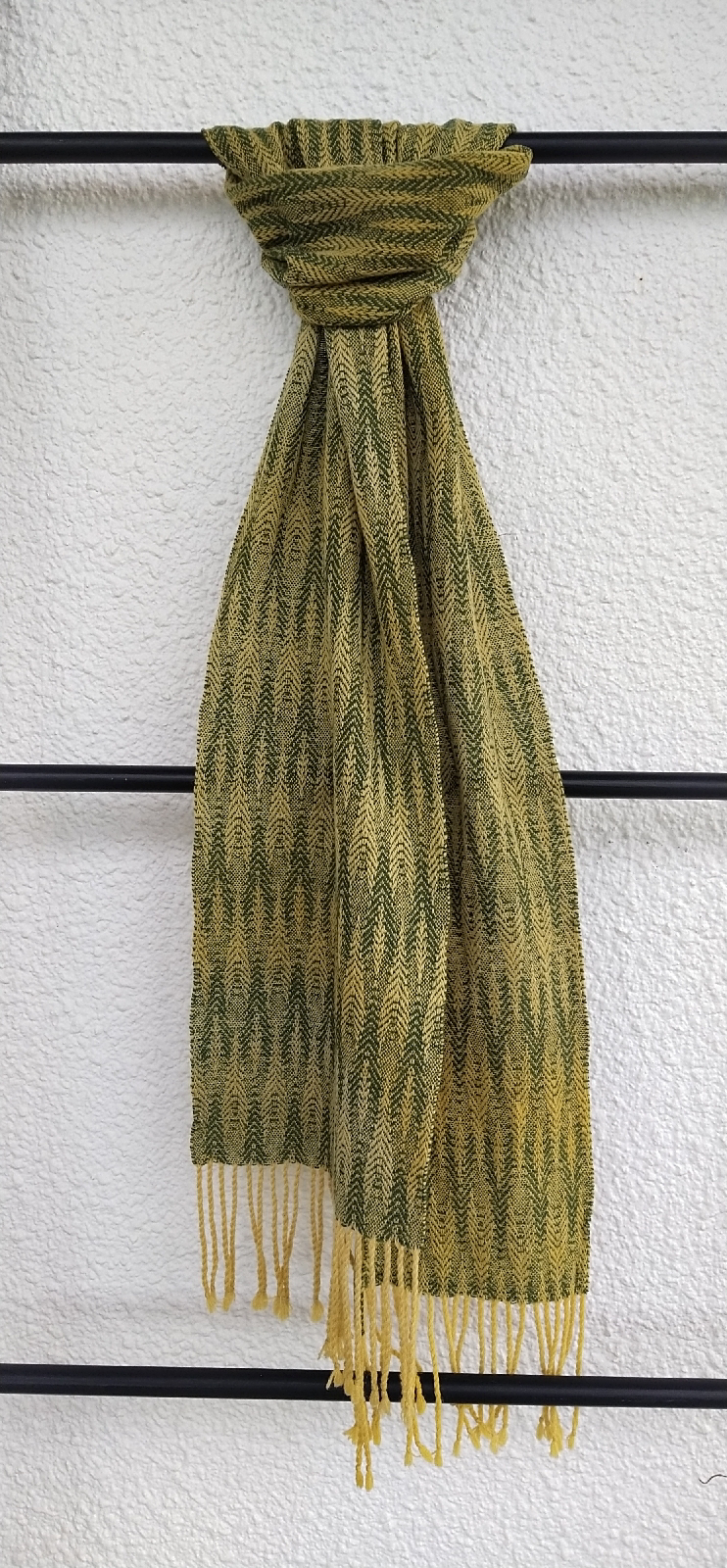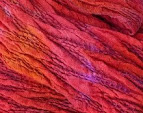Many years ago I used to make shoulder wraps or ponchos and joined the shoulder with buttons and buttonholes so it could be warn as a shawl if desired.
It occurred to me that maybe a good way to use up leftover threads and balls of yarn I had accumulated over the years was to weave fabric for shoulder wraps. But it wouldn't be easy to get matching buttons as, I think, the nearest shop would be 50 km away. The solution was to join the shoulder as it is such a comfortable and versatile garment who needs a shawl!
Now it happened that the threads for a scarf sett at 24tpi could be spread out to 8tpi and this made a very good width for a poncho - just rethread the reed, not all the heddles as well. Lazy, I know!
I had lots of shades of mohair which I wound with a smooth thread, like wool, between which meant the mohair fluff didn't have space to hold hands and prevent a shed for the shuttle to be thrown through.
These green ones have a lovely yarn with big slubs spaced at intervals across the warp. This helps to blend the colours rather than stripes.

Rich wine colours and who doesn't love some bling occasionally?
(These ones have all sold.)















